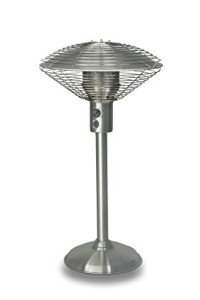20 Resources That Will Make You More Successful At Buy Gas Radiant Heaters

Buying Gas Radiant Heaters: A Comprehensive Guide
Gas radiant heaters have gained popularity in the last few years for their performance and ability to offer instant warmth. As more property owners and services look for ways to keep their areas comfy, comprehending the functions, benefits, and considerations when acquiring these heating units can be very useful. This article explores the intricacies of gas radiant heaters, aiding prospective purchasers in making informed choices.
What are Gas Radiant Heaters?
Gas radiant heaters are gadgets that use propane or natural gas to release heat straight into a room. Instead of heating the air, they warm items and individuals in their vicinity, supplying comfort more rapidly and effectively. These heaters are popular for both indoor and outdoor settings due to their flexibility and effectiveness.
Key Features of Gas Radiant Heaters
- Direct Heating: Unlike standard heaters that warm the air, gas radiant heaters supply direct warmth, making them an efficient choice for rapidly heating up spaces.
- Mobility: Many designs are readily available as portable units, enabling them to be easily moved from one place to another.
- Fuel Variety: Gas radiant heaters can be powered by natural gas or propane, giving users flexibility based upon availability and preference.
- Adjustable Settings: Most gas radiant heaters featured adjustable heat settings, permitting users to personalize the level of heat based upon their requirements.
Advantages of Gas Radiant Heaters
- Energy Efficiency: These heaters transform gas into heat efficiently, resulting in lower energy expenses compared to electrical heaters.
- Quick Heating: Radiant heat is felt nearly right away, making these heaters suitable for sudden temperature level drops.
- Low Maintenance: Gas radiant heaters usually require less maintenance than electric models, making them a problem-free alternative.
- Eco-friendly: When powered by clean gas, these heaters can be a more environmentally sustainable choice compared to other heating methods.
Kinds Of Gas Radiant Heaters
When it comes to picking a gas radiant heater, it's necessary to comprehend the various types readily available. Below are the most common options:
- Indoor Gas Radiant Heaters: Designed for indoor areas, these heaters are usually vented or unvented and typically included integrated security features.
- Outdoor Gas Radiant Heaters: Commonly used in outdoor patios or outdoor dining locations, these heaters are developed to endure the aspects.
- Wall-Mounted Gas Radiant Heaters: A space-saving option, these systems are ideal for smaller sized areas and can be equipped with different heat outputs depending on the location's requirements.
- Freestanding Gas Radiant Heaters: These portable designs can be used in various places, ideal for those who need versatility.
Buying Guide: How to Choose the Right Gas Radiant Heater
When purchasing a gas radiant heater, a number of factors need to be thought about to guarantee you pick the right model for your space:
1. Heating Capacity
- Determined in BTUs (British Thermal Units), the heater's capability figures out how much location it can effectively warm. Purchasers must assess their particular requirements based upon room size.
| Space Size (sq ft) | Recommended BTUs (for Gas Radiant Heaters) |
|---|---|
| 100 - 200 | 5,000 - 10,000 BTUs |
| 200 - 400 | 10,000 - 20,000 BTUs |
| 400 - 600 | 20,000 - 30,000 BTUs |
| 600 - 800 | 30,000+ BTUs |
2. Kind of Gas
- Think about whether you will be utilizing propane or natural gas, as different heaters cater to different fuel types.
3. Safety Features
- Search for designs equipped with safety features such as automatic shut-off valves, tip-over security, and oxygen exhaustion sensing units.
4. Setup Requirements
- Some heaters might require professional installation, especially vented models. Make made a post to think about the expenses and requirements related to installation.
5. Portability
- If versatility is necessary, consider portable models that can be quickly moved from one location to another.
Setup and Maintenance
Gas radiant heaters are normally straightforward to install, specifically portable designs. Nevertheless, vented options may require expert installation to ensure they fulfill local security codes.
Upkeep normally includes:
- Regular cleansing to prevent dust buildup.
- Inspecting gas connections and fittings for leaks.
- Guaranteeing safety features are practical.
Idea: Regular checks around the system can help extend its life expectancy and keep safety.
Frequently Asked Questions (FAQs)
Q1: Are gas radiant heaters safe for indoor use?A1: Yes
, as long as they are properly vented and equipped with required safety features, they can be securely utilized inside.
Q2: Can gas radiant heaters be used in enclosed spaces?A2: Unvented gas heaters can pose dangers in enclosed areas due to prospective suffocation or carbon monoxide buildup. Constantly guarantee sufficient ventilation. Q3: How do I understand what size heater I need?A3: The appropriate size depends upon the area you mean to heat. Refer to the BTU chart
above to identify your needs. Q4: What is the distinction in between propane and gas heaters?A4: The main distinction depends on their energy source
; propane is provided via tanks, while gas is normally piped into homes. Q5: How can I maximize efficiency?A5: Ensure the heater is appropriately sized for your space, maintain it regularly, and think about using it in combination
with other heating approaches for maximum convenience. Gas radiant heaters can be a great addition to any home or service, offering energy-efficient and quick heating solutions. By comprehending the different types, functions, and factors to consider
when acquiring, buyers can make informed decisions that satisfy their heating requires. With the right choice, these heaters provide comfort, reliability, and an inviting environment throughout cooler seasons.

